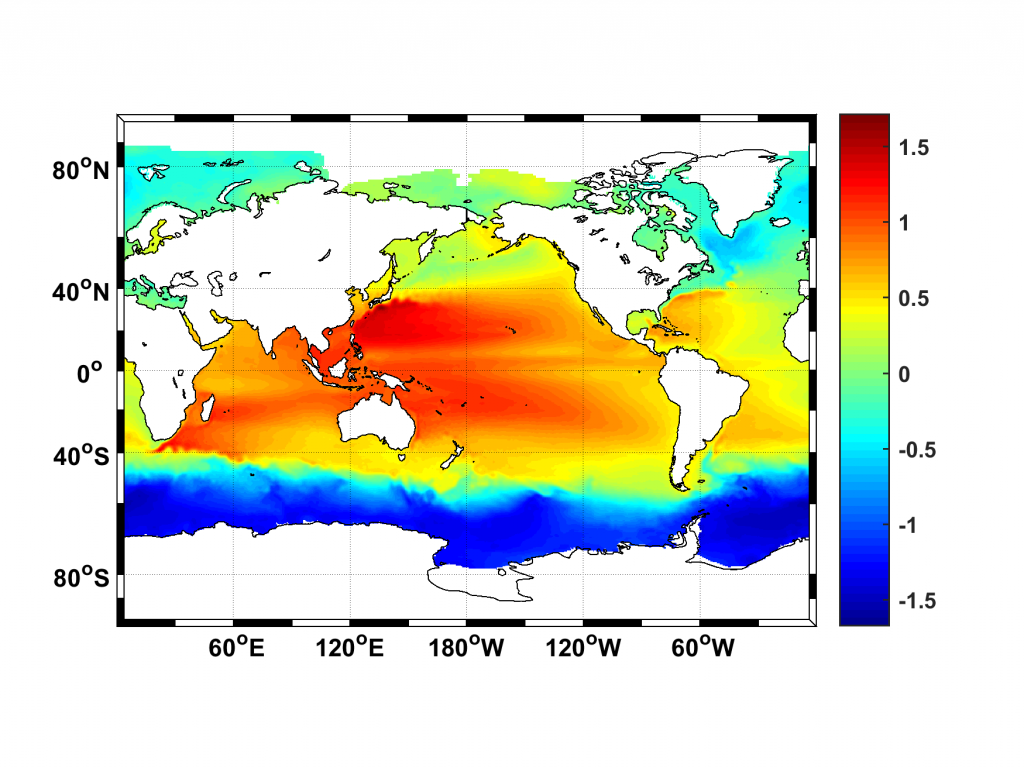
Steady ocean currents, also called geostrophic currents, can be estimated by exploiting data coming from Earth Observation satellite missions. In particular the Mean Dynamic Topography (MDT), namely the oceanic relief corresponding to permanent ocean circulation, can be directly computed by subtracting a global geoid model, like the one derived from the GOCE mission, to a mean sea surface model which is in turn derived from satellite altimetry missions, like ENVISAT.
The activities performed by GEOlab in the framework of an ESA-STSE project called MEGG-C consist in filtering the MDT by using a stochastic approach based on collocation. To do that an accurate modelling of the signal and noise covariance structure is required and has been performed. The ouptut of our analysis is an MDT global model, called WIG-MDT, expressed as a spherical harmonic expansion, and provided with its estimation error covariance matrix. From this model, it is quite straightforward to derive the corresponding geostrophic currects, again with their estimation errors.
The ingestion of the WIG-MDT model into more general oceanographic models for weather and climate forecast is currently under investigation. The next step is the model refinement in a regional area, and more specifically in the Mediterranean Sea, which is a very interesting semi-closed basin from the circulation point of view.
References:
Gilardoni M., Reguzzoni M., Albertella A (2015).Global mean dynamic topography based on GOCE data and Wiener filters. EGU General Assembly, Wien, 12 – 17 April 2015.
M. Gilardoni, M. Menna, P.-M. Poulain and M. Reguzzoni (2013). Premininary analysis on GOCE contribution to the Mediterranean Sea Circulation. In Proceedings of the ESA Living Planet Symposium, Edimburgh, United Kingdom, 9 – 13 September 2013.